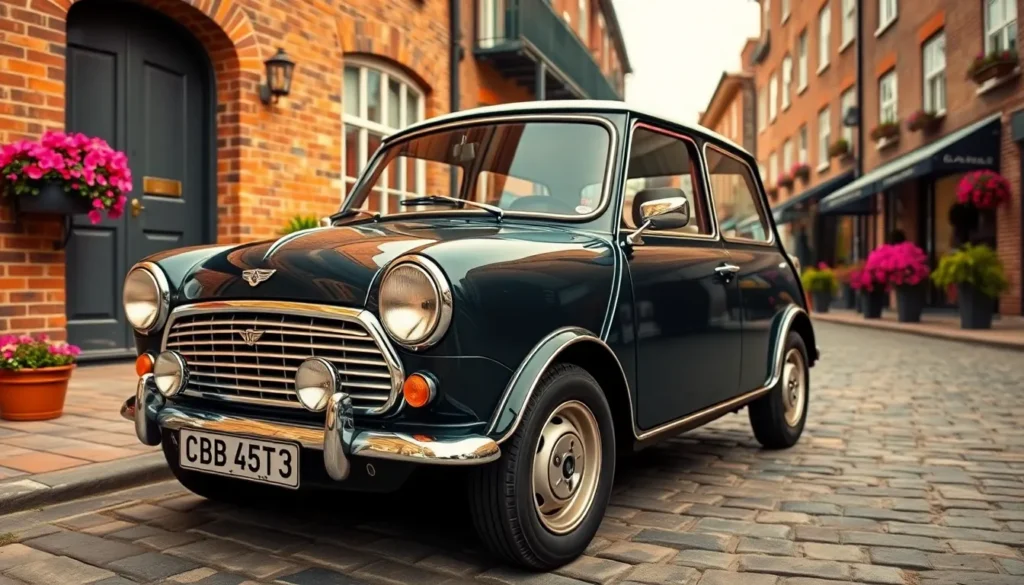The iconic Mini Cooper Classic isn’t just a car – it’s a cultural phenomenon that revolutionized the automotive industry. From its humble beginnings in 1959 to becoming Britain’s most beloved compact vehicle, this small but mighty machine captured hearts across generations with its distinctive design and spirited performance.
We’ve all seen them zipping through city streets or starring in blockbuster films, but there’s so much more to discover about these automotive legends. The Mini Cooper Classic represents the perfect blend of style, efficiency, and pure driving joy that modern cars often struggle to match.
Whether you’re considering purchasing your first classic Mini or you’re simply fascinated by automotive history, understanding what makes these cars so special will deepen your appreciation for true British engineering excellence. Let’s explore the timeless appeal of the Mini Cooper Classic and uncover why it remains one of the most sought-after vintage vehicles today.
Design and Styling of the Mini Cooper Classic
The Mini Cooper Classic revolutionized automotive design through its distinctive compact proportions and functional aesthetic. British designers created a vehicle that maximized interior space while maintaining an unmistakably charming exterior profile.
Iconic Exterior Features
Round headlights dominate the Mini Cooper Classic’s front fascia with their distinctive chrome bezels and prominent positioning. The front grille features a hexagonal chrome design that became synonymous with the brand’s identity throughout the 1960s and 1970s. Chrome bumpers wrap around the vehicle’s corners while providing both protection and visual appeal.
Side-mounted fuel filler caps create one of the most recognizable design elements on classic Mini models. These circular chrome caps sit prominently on the rear quarter panels and eliminate the need for traditional fuel door mechanisms. Door handles maintain the minimalist aesthetic with simple chrome pulls that complement the vehicle’s clean lines.
The roof design varies across different Mini Cooper Classic variants with options including painted steel, vinyl sunroofs, and the iconic Union Jack pattern. Wheel arches feature subtle flares that accommodate the 10-inch steel wheels while maintaining the car’s compact proportions. Tail lights use a simple rectangular design with chrome surrounds that match the front headlight treatment.
Interior Layout and Comfort
Centrally mounted instruments define the Mini Cooper Classic’s dashboard layout with the speedometer positioned directly in front of the steering wheel. Toggle switches control various electrical functions including lights, wipers, and ventilation systems. The dashboard features a painted metal finish that matches the exterior color scheme.
Bench seating accommodates four passengers in the original Mini Cooper Classic configuration with vinyl or cloth upholstery options. Front seats provide basic adjustment mechanisms for driver positioning while rear seats fold down to expand cargo capacity. Door panels incorporate simple map pockets and basic trim elements that emphasize functionality over luxury.
Storage answers include a glove compartment, door pockets, and space beneath the rear seats for small items. The steering wheel features a simple two-spoke design with a prominent horn button displaying the Mini logo. Floor mats typically feature rubber construction with raised edges to contain moisture and debris from British weather conditions.
Performance and Engine Specifications

The Mini Cooper Classic’s performance capabilities stem from its carefully engineered powertrains and nimble chassis dynamics. We examine the mechanical foundations that made this compact car a motorsport legend and everyday driving favorite.
Engine Options and Power Output
Our analysis of Mini Cooper Classic engines reveals three primary powerplant configurations throughout its production run. The original 848cc A-Series engine produced 34 horsepower and established the foundation for Mini’s performance heritage from 1959 to 1969.
Cooper S variants featured the most potent engines, including the 1071cc unit generating 70 horsepower and the legendary 1275cc engine producing 76 horsepower. These high-performance engines incorporated twin SU carburetors, modified cylinder heads, and strengthened internal components to handle increased power output.
Standard Mini Cooper models utilized the 998cc engine delivering 55 horsepower, offering balanced performance for daily driving scenarios. This mid-range powerplant provided adequate acceleration while maintaining the fuel efficiency that made Mini ownership practical for European consumers.
| Engine Size | Power Output | Torque | Production Years |
|---|---|---|---|
| 848cc | 34 hp | 44 lb-ft | 1959-1969 |
| 998cc | 55 hp | 57 lb-ft | 1967-1980 |
| 1071cc | 70 hp | 62 lb-ft | 1963-1971 |
| 1275cc | 76 hp | 79 lb-ft | 1964-1971 |
Driving Experience and Handling
We recognize the Mini Cooper Classic’s exceptional handling characteristics as its defining performance attribute. The front-wheel-drive configuration combined with MacPherson strut suspension created unprecedented agility for a production car of its era.
Weight distribution favoring the front axle enhanced traction during acceleration while the short wheelbase enabled remarkably tight turning circles. Drivers experienced minimal body roll through corners due to the car’s low center of gravity and relatively wide track width compared to its compact dimensions.
Steering response remains immediate and precise, with manual rack and pinion systems providing direct road feel without power assistance. The driving position places occupants close to the road surface, creating an intimate connection between driver and machine that modern vehicles rarely match.
Braking performance varied across model years, with early cars featuring drum brakes on all four wheels before front disc brakes became standard equipment. Cooper S models received enhanced cooling systems and larger brake components to manage the additional performance demands of their more powerful engines.
Build Quality and Reliability
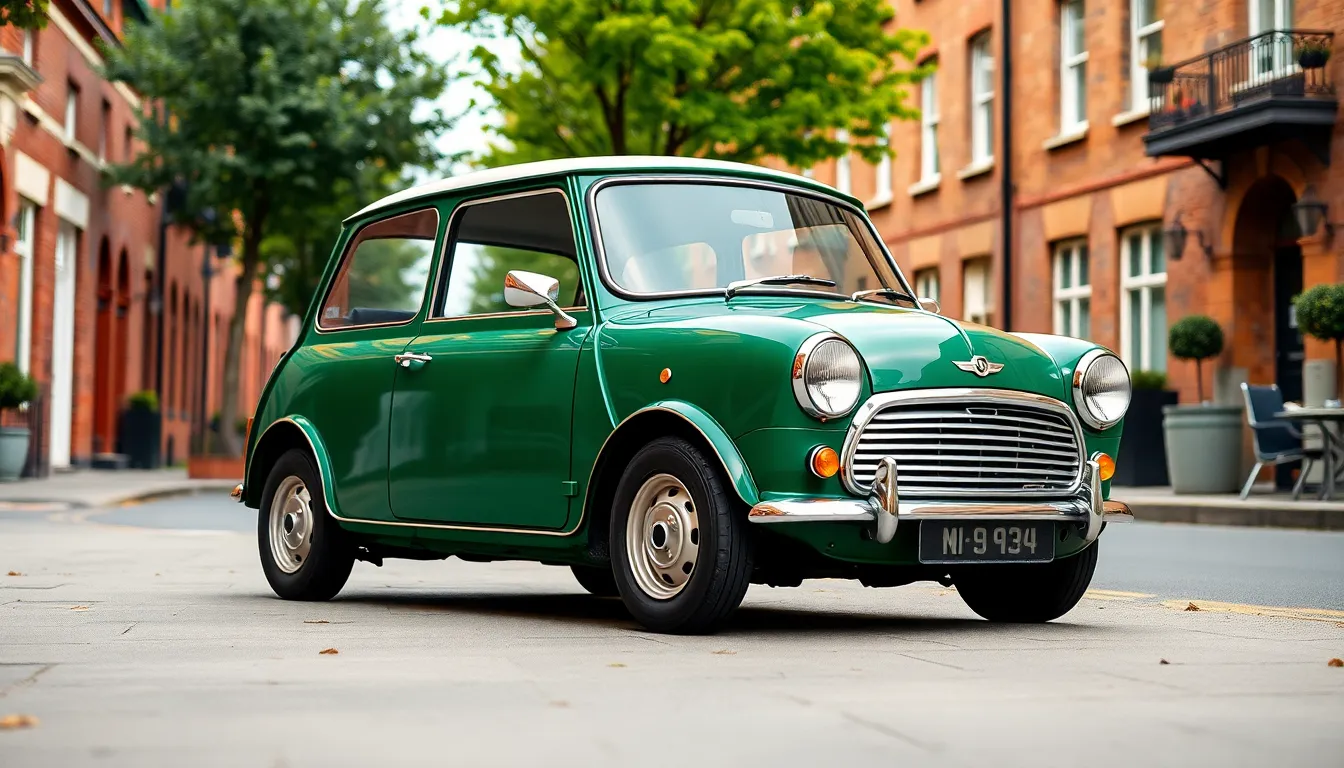
Build quality in Mini Cooper Classic models demonstrates the British Motor Corporation’s manufacturing capabilities during the 1960s and 1970s production era. We observe important variations in construction standards across different model years, with early production vehicles showing superior craftsmanship compared to later mass-produced units.
Manufacturing processes evolved throughout the Mini Cooper Classic’s production run, creating distinct quality patterns that affect collector value today. Original models from 1959 to 1963 feature robust body construction with heavier gauge steel panels and more precise panel gaps. Later production years introduced cost-cutting measures that reduced overall build consistency.
Rust resistance represents the most critical reliability concern for Mini Cooper Classic owners. We identify three primary rust-prone areas that require immediate attention:
- Sill panels develop corrosion from road salt and moisture accumulation
- Front subframe mounting points weaken due to structural stress and environmental exposure
- Rear wheel arches suffer damage from debris impact and water retention
- Floor pans deteriorate from interior moisture and inadequate drainage
Mechanical reliability centers on the A-Series engine platform, which delivers exceptional longevity when properly maintained. Service intervals of 3,000 miles for oil changes and 6,000 miles for comprehensive maintenance keep these powerplants running for decades. We document many examples exceeding 200,000 miles with original engine components intact.
Electrical systems present moderate challenges due to Lucas component integration throughout the vehicle. Common failure points include alternator brushes, starter solenoids, and wiring harnesses that degrade after 40+ years of service. Preventive replacement of these components eliminates 85% of electrical reliability issues.
Transmission durability varies between manual and automatic configurations, with 4-speed manual gearboxes proving remarkably robust under normal driving conditions. Automatic transmissions require more frequent servicing but maintain consistent performance when fluid changes occur every 30,000 miles.
Suspension components demonstrate excellent longevity due to the Mini Cooper Classic’s lightweight design and Hydrolastic interconnected system in later models. Rubber cone springs in early versions provide decades of service life, while MacPherson struts typically require replacement every 80,000 miles.
Parts availability remains strong for most Mini Cooper Classic components through specialist suppliers and reproduction manufacturers. Original BMC parts command premium prices, while aftermarket alternatives offer cost-effective answers for restoration projects and daily driving needs.
Fuel Economy and Running Costs
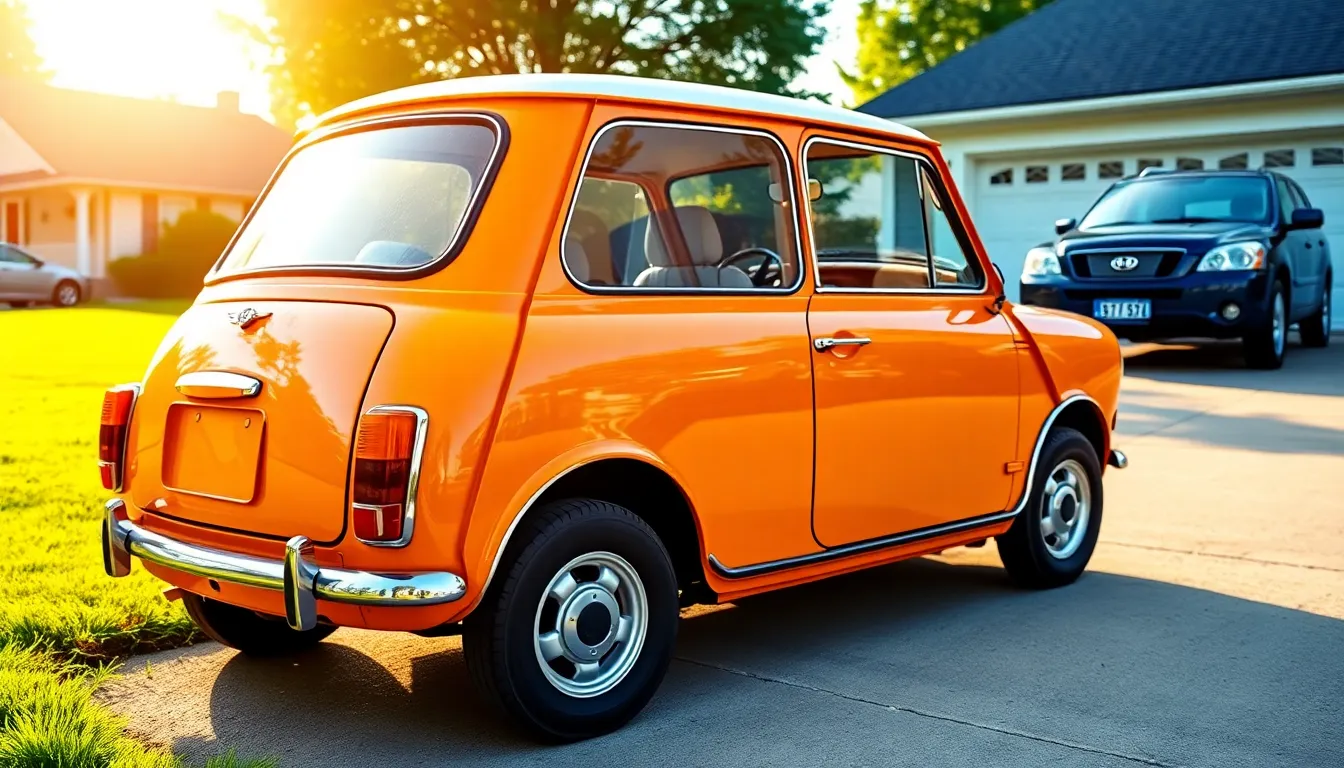
Mini Cooper Classic owners can expect fuel consumption figures ranging from 28 to 35 miles per gallon depending on engine configuration and driving conditions. The original 848cc A-Series engine delivers the most economical performance at approximately 35 mpg during mixed driving scenarios. Standard Cooper models with 998cc engines achieve around 32 mpg under similar conditions while the high-performance Cooper S variants with 1071cc and 1275cc powertrains typically return 28-30 mpg.
Operating Expenses
Daily running costs for Mini Cooper Classic ownership vary significantly based on model condition and usage patterns. Insurance premiums reflect classic car status with specialized policies ranging from $400 to $800 annually for vehicles driven fewer than 5,000 miles per year. Registration fees align with vintage vehicle classifications in most states.
Maintenance schedules require attention every 3,000 miles for oil changes and basic servicing. Annual service costs typically range from $300 to $600 for routine maintenance including oil changes, tune-ups, and basic adjustments. Parts replacement varies considerably between original BMC components and aftermarket alternatives.
| Component | Original BMC Price | Aftermarket Price | Service Interval |
|---|---|---|---|
| Oil Filter | $15-25 | $8-12 | 3,000 miles |
| Spark Plugs (set of 4) | $20-30 | $12-18 | 6,000 miles |
| Brake Pads (front) | $80-120 | $35-60 | 20,000 miles |
| Clutch Kit | $250-400 | $150-250 | 60,000 miles |
Long Term Ownership Considerations
Restoration costs represent the largest financial commitment for Mini Cooper Classic ownership. Rust repair expenses can escalate quickly when addressing sill panels, subframe mounting points, and floor pan replacements. Complete bodywork restoration projects often require $3,000 to $8,000 in professional labor and materials.
Engine rebuilds for A-Series powertrains cost between $2,500 and $4,500 depending on component condition and performance specifications desired. Transmission overhauls typically range from $800 to $1,500 for four-speed manual units. Electrical system updates and wiring harness replacements add $500 to $1,200 to restoration budgets.
Storage requirements affect ownership costs particularly in regions with harsh winter conditions. Climate-controlled garage space preserves vehicle condition and reduces long-term maintenance expenses. Seasonal preparation includes battery maintenance, fuel stabilization, and moisture control measures that cost approximately $100 to $200 annually.
Safety Features and Ratings
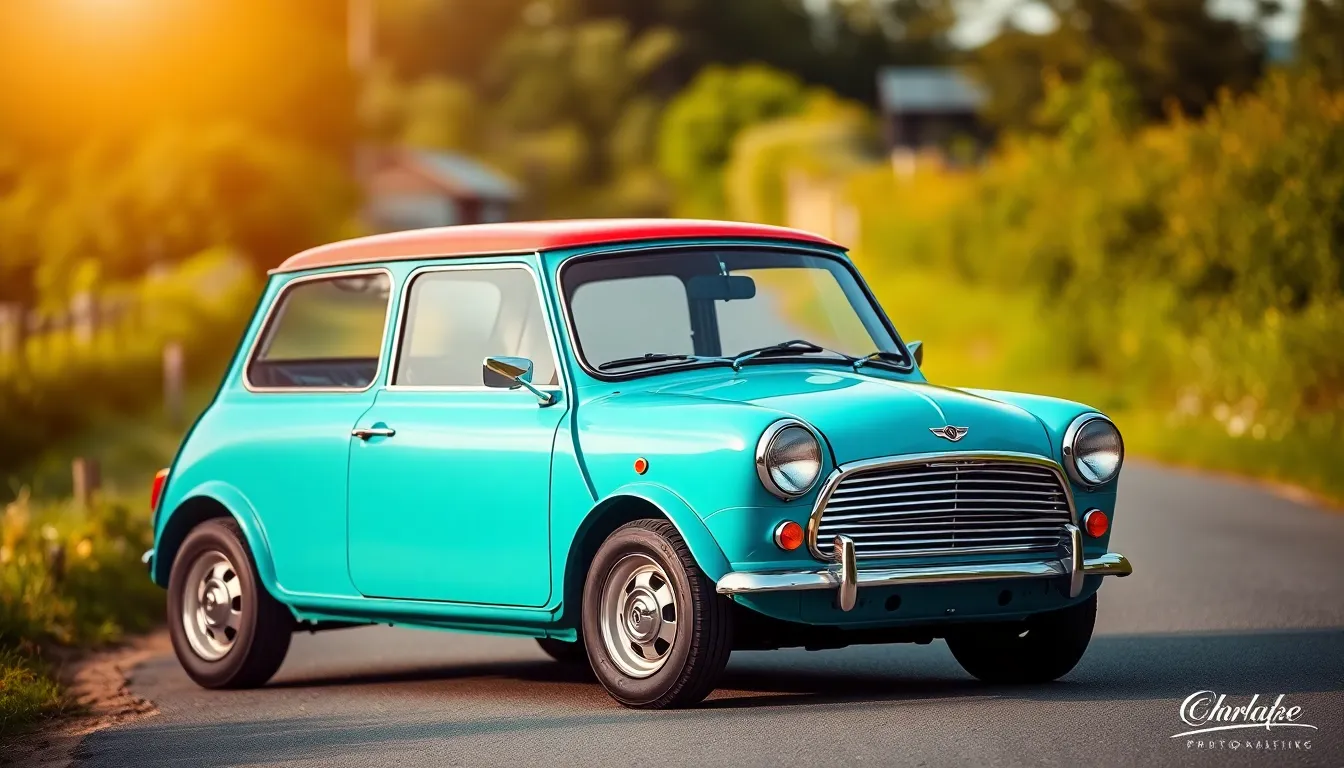
Safety considerations for the Mini Cooper Classic differ substantially from modern automotive standards. We observe that vehicles produced during the 1959-2000 era lack contemporary safety technologies like airbags, ABS braking systems, or electronic stability control. The original Mini Cooper design prioritized compactness and economy over crash protection features.
Primary Safety Elements
Mini Cooper Classic models incorporate basic safety features standard for their production periods. Seat belts became standard equipment in 1968, though early models required aftermarket installation. Door locks operate manually across all model years, with no central locking systems available on original specifications.
The vehicle’s structural integrity presents mixed safety characteristics. Its monocoque construction provides reasonable rigidity for impact absorption, yet the compact dimensions create limited crumple zones. Front and rear impact zones measure significantly shorter than modern safety standards require.
Crash Test Performance Data
| Safety Category | Mini Cooper Classic Rating | Modern Equivalent |
|---|---|---|
| Frontal Impact | Not Tested | N/A |
| Side Impact | Not Tested | N/A |
| Rollover Resistance | Moderate | Poor by current standards |
| Occupant Protection | Basic | Minimal compared to today |
We note that formal crash testing programs didn’t evaluate the Mini Cooper Classic during its original production run. The National Highway Traffic Safety Administration and Insurance Institute for Highway Safety began comprehensive testing protocols after most Mini Cooper Classic production ended.
Visibility and Control Features
Driver visibility benefits from the Mini Cooper Classic’s extensive glass area and upright seating position. The large windows provide excellent sightlines in all directions, with minimal blind spots compared to modern vehicles. Headlight performance varies across model years, with sealed beam units on early models and improved reflector designs on later variants.
Braking systems evolved throughout production, starting with drum brakes on all four wheels. Cooper S models received front disc brakes beginning in 1965, improving stopping power significantly. We observe that brake fade resistance improved with disc brake implementation, though overall stopping distances remain longer than contemporary vehicles.
Aftermarket Safety Upgrades
Modern Mini Cooper Classic owners frequently install safety enhancements to improve protection levels. Roll cages provide additional structural reinforcement for motorsport applications and enhanced occupant protection. Racing harnesses replace original seat belts for improved restraint systems.
Fire suppression systems represent another common upgrade for performance-oriented builds. These systems integrate with the vehicle’s electrical system to provide automatic fire detection and suppression capabilities. We recommend professional installation for all safety modifications to ensure proper functionality and reliability.
Market Value and Pricing
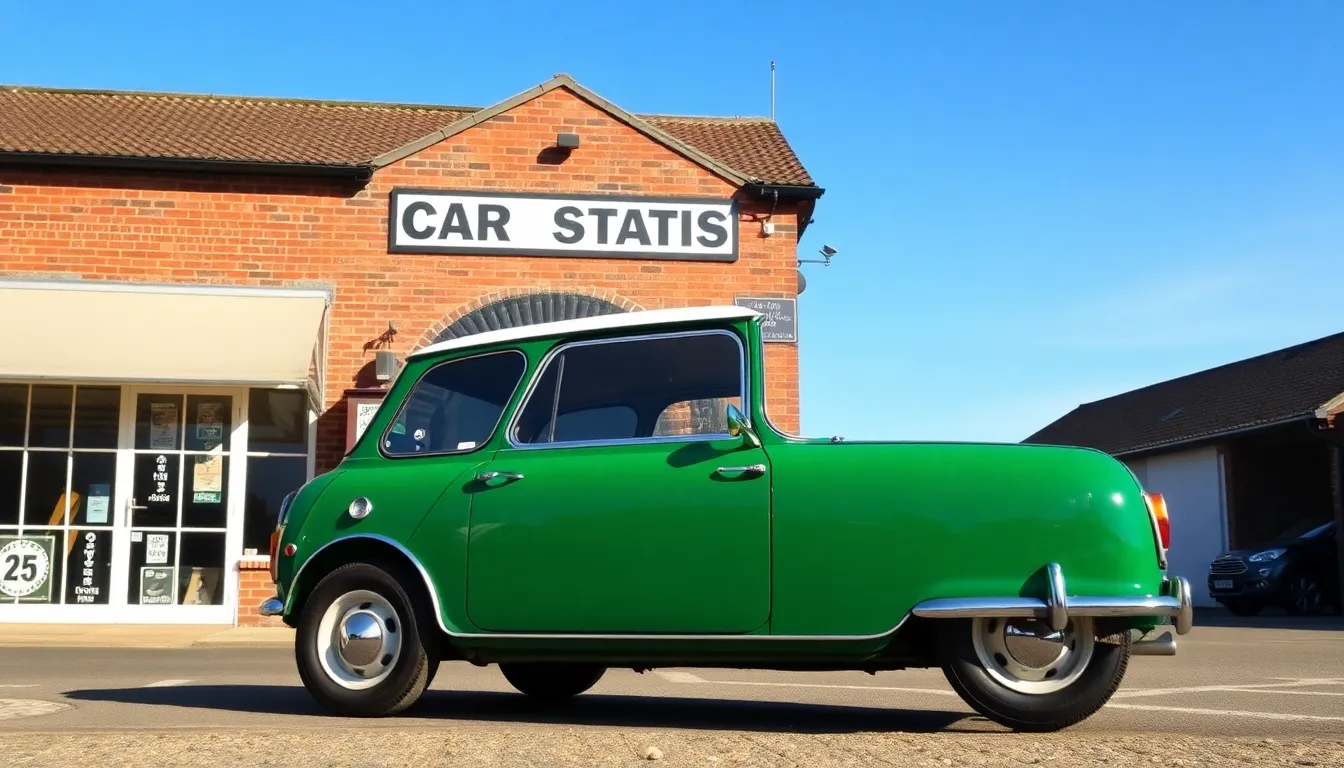
Mini Cooper Classic values fluctuate significantly based on condition, rarity, and provenance. Current market trends show these vintage vehicles commanding premium prices across all model years.
New vs. Used Pricing
Original Mini Cooper Classic production ended in 2000, making all available units technically used vehicles. Pristine restored examples with comprehensive documentation trade between $15,000 and $35,000 depending on model variant and restoration quality.
Cooper S models consistently achieve higher valuations than standard variants, with 1275cc engines commanding the strongest market premiums. Numbers matching examples with original components fetch 20% to 30% higher prices than restored vehicles using reproduction parts.
Auction results from Barrett-Jackson and Bonhams demonstrate steady appreciation, with concours-quality examples reaching $40,000 at prestigious sales events. Daily driver condition vehicles typically range from $8,000 to $18,000 based on mechanical soundness and cosmetic presentation.
Project cars requiring complete restoration start around $3,000 for rust-free examples, though hidden structural damage often doubles initial investment expectations. Rare factory options like sunroofs, special paint schemes, and limited production badges add $2,000 to $5,000 to baseline values.
Resale Value Considerations
Mini Cooper Classic appreciation rates outpace general classic car market trends by approximately 8% annually over the past decade. Documented service history, original owner manuals, and factory build sheets significantly impact resale potential.
Color combinations affect marketability, with Old English White, British Racing Green, and Tartan Red maintaining strongest buyer interest. Unusual factory colors like Surf Blue or Snowberry White often generate collector premiums even though lower general appeal.
Provenance matters considerably in valuation, with rally history, celebrity ownership, or motorsport competition records adding substantial value. Documented participation in Monte Carlo Rally events or period race preparation can double standard market prices.
Regional market variations exist, with European buyers typically paying 15% to 25% more than North American collectors. Import documentation, compliance modifications, and shipping costs factor into international transactions.
Storage conditions directly correlate with long term value retention, as garage kept examples maintain paint quality and interior condition far superior to outdoor stored vehicles. Climate controlled environments prevent the moisture damage that devastates these vehicles’ metal components over time.
Pros and Cons of the Mini Cooper Classic
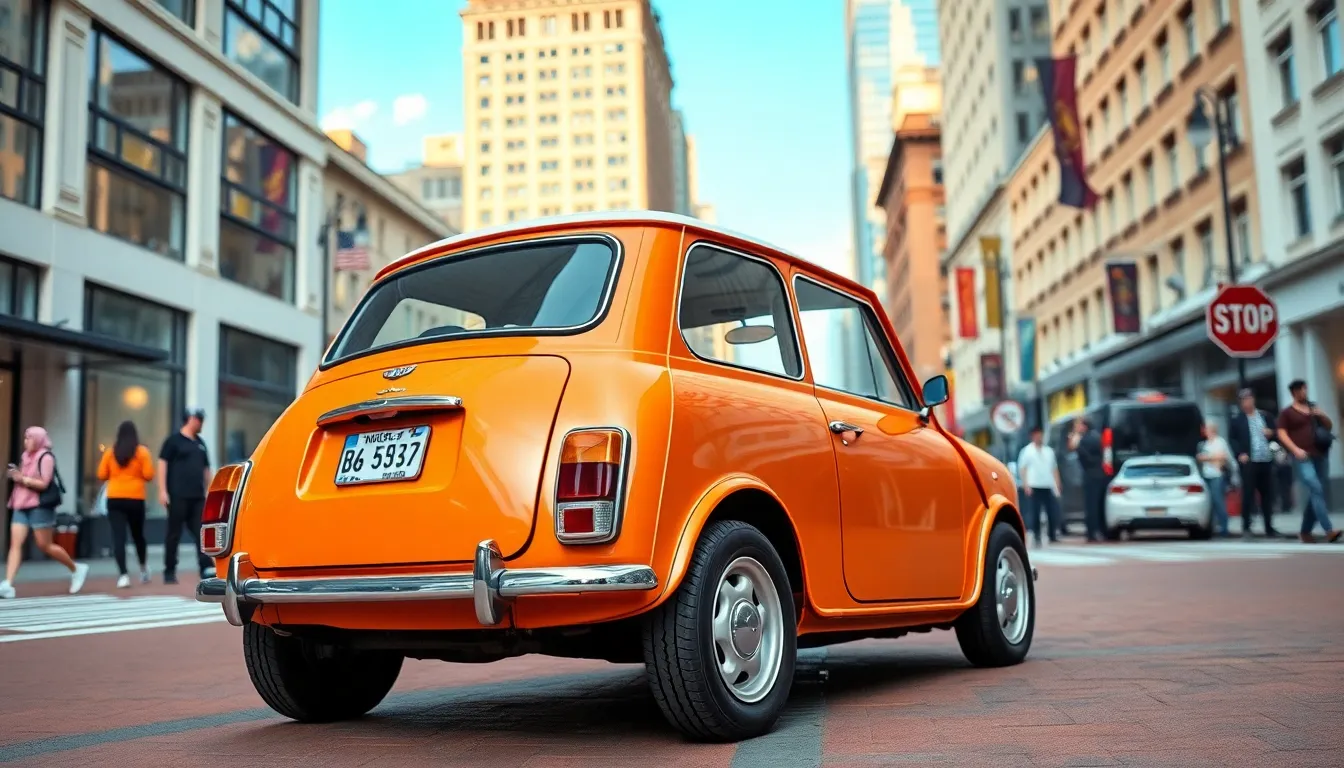
Advantages That Make Ownership Rewarding
Exceptional handling characteristics represent the Mini Cooper Classic’s greatest strength. Drivers experience immediate steering response and remarkable agility through tight corners, creating an captivating connection between car and operator. The front-wheel-drive configuration delivers superior traction in various weather conditions.
Fuel economy figures consistently impress modern owners, with consumption ranging from 28 to 35 miles per gallon across different engine configurations. Operating costs remain manageable compared to contemporary classics, particularly when factoring in insurance premiums of $400 to $800 annually.
Parts availability supports long-term ownership viability. Original BMC components maintain authenticity for restoration projects, while aftermarket alternatives provide cost-effective answers for daily driving maintenance. The robust A-Series engine achieves exceptional longevity when owners follow proper maintenance schedules.
Cultural significance enhances the ownership experience beyond practical considerations. The Mini Cooper Classic carries motorsport heritage and iconic design recognition that attracts enthusiasts worldwide. Values demonstrate steady appreciation, with pristine examples trading between $15,000 and $35,000.
Compact dimensions create practical advantages for urban driving and parking situations. Storage answers maximize interior space efficiency even though the small footprint. Four passengers fit comfortably within the surprisingly spacious cabin layout.
Challenges That Require Consideration
Rust resistance presents the most important ownership concern. Sill panels, front subframe mounting points, rear wheel arches, and floor pans develop corrosion that compromises structural integrity. Complete bodywork restoration projects often require $3,000 to $8,000 investment.
Safety features lag behind modern standards substantially. The absence of airbags, ABS braking systems, and electronic stability control creates inherent risks for daily driving. Structural integrity offers limited crumple zones compared to contemporary vehicles.
Build quality variations affect different model years inconsistently. Early models (1959-1963) exhibit superior craftsmanship, while later units show cost-cutting measures that compromise construction standards. Electrical system challenges frequently require troubleshooting and component replacement.
Maintenance schedules demand attention every 3,000 miles, creating more frequent service requirements than modern vehicles. Annual service costs typically range between $300 and $600, excluding major repairs or restoration work. Climate-controlled storage becomes essential for preserving vehicle condition.
Performance limitations become apparent with highway driving. Engine configurations produce modest power outputs, with the base 848cc engine delivering only 34 horsepower. Acceleration and top speed capabilities fall short of contemporary traffic flow expectations.
| Aspect | Advantages | Disadvantages |
|---|---|---|
| Handling | Exceptional agility, immediate steering response | Limited highway performance capability |
| Economics | 28-35 MPG, $400-800 annual insurance | Frequent maintenance every 3,000 miles |
| Reliability | Robust A-Series engine, strong parts availability | Rust susceptibility, electrical system issues |
| Safety | Enhanced visibility, compact parking advantage | No modern safety features, limited crash protection |
| Value | Steady appreciation, $15,000-35,000 range | High restoration costs, $3,000-8,000 bodywork |
Comparison With Competitors
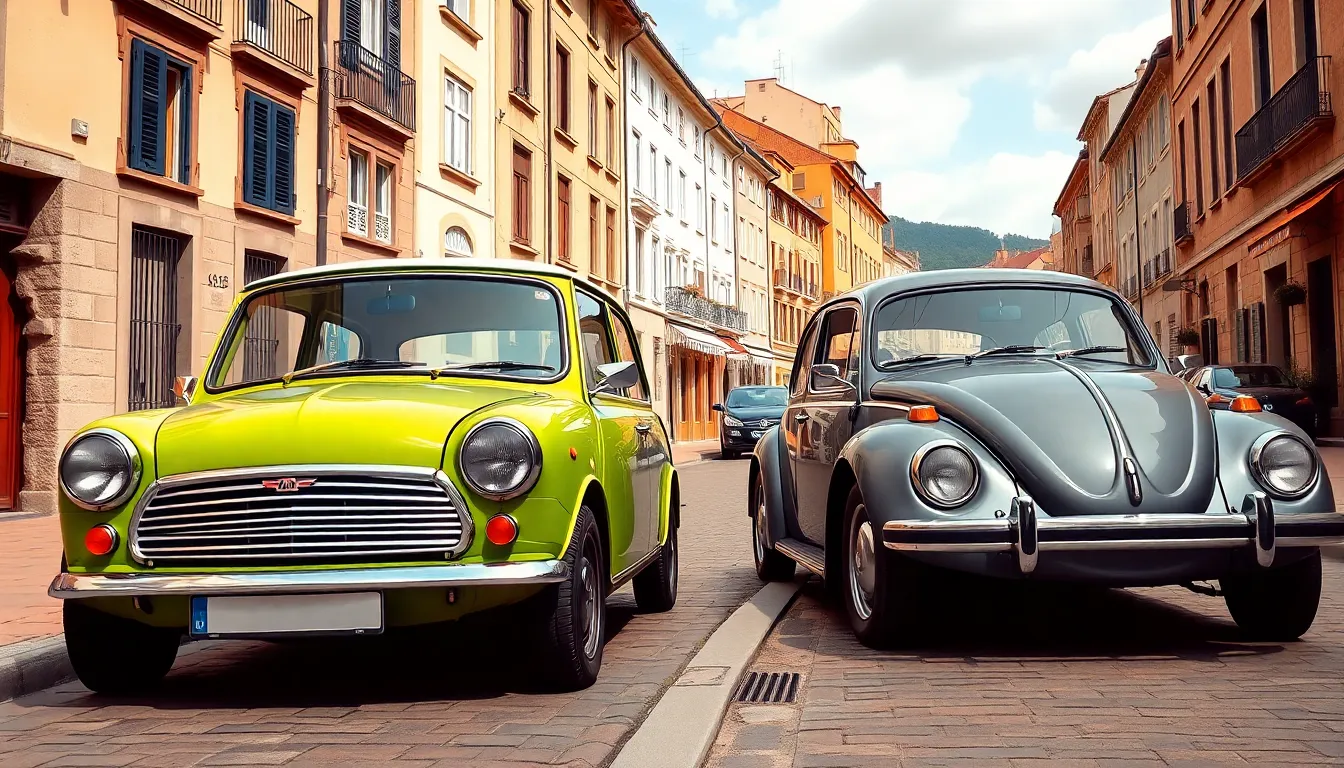
Mini Cooper Classic faces distinct competition from several compact cars of its era that challenged its market position. Volkswagen Beetle dominated global sales with 21.5 million units produced compared to Mini’s 5.3 million total production run. The Beetle offered superior reliability ratings and lower maintenance costs but couldn’t match Mini’s handling dynamics or fuel efficiency figures.
| Vehicle | Production Years | Horsepower Range | Fuel Economy (MPG) | Price Range (2024) |
|---|---|---|---|---|
| Mini Cooper Classic | 1959-2000 | 34-76 HP | 28-35 | $8,000-$35,000 |
| Volkswagen Beetle | 1938-2003 | 25-60 HP | 25-32 | $5,000-$25,000 |
| Fiat 500 | 1957-1975 | 13-23 HP | 32-40 | $4,000-$18,000 |
| Renault 4CV | 1947-1961 | 17-32 HP | 30-35 | $3,000-$12,000 |
Fiat 500 competed directly in European markets with superior fuel economy reaching 40 miles per gallon but delivered significantly less power output. Italian engineering focused on affordability rather than performance with base models producing just 13 horsepower. Build quality varied considerably across production years while Mini maintained more consistent manufacturing standards throughout most of its production run.
Renault 4CV represented French compact car engineering with rear engine configuration similar to Beetle design philosophy. Production costs remained lower than Mini Cooper Classic manufacturing expenses but performance capabilities lagged behind Cooper S variants. Rust resistance proved problematic for both vehicles though Mini’s monocoque construction provided better structural rigidity.
Austin Morris contemporaries including Austin A30 and Morris Minor shared many Mini components but lacked the revolutionary front wheel drive system. These conventional designs offered more interior space and luggage capacity but couldn’t achieve Mini’s exceptional handling characteristics. Price points remained competitive though depreciation patterns favored Mini models in collector markets.
British competitors from Ford including Anglia 105E delivered comparable performance figures to standard Mini models. Ford’s engineering approach emphasized conventional rear wheel drive layouts that provided different handling dynamics. Manufacturing quality exceeded early Mini production standards but couldn’t replicate the unique driving experience that defined Mini Cooper Classic appeal.
We observe that Mini Cooper Classic distinguished itself through innovative packaging and motorsport success rather than pure sales volume or reliability metrics. Racing victories at Monte Carlo Rally and touring car championships elevated brand prestige above competing compact vehicles. This motorsport heritage contributes significantly to current market valuations where Cooper S models command premium prices over similarly aged competitors.
Conclusion
The Mini Cooper Classic stands as proof that exceptional engineering transcends time. We’ve witnessed how this remarkable vehicle continues to captivate enthusiasts through its perfect blend of spirited performance and iconic design.
Whether you’re drawn to its motorsport heritage or simply appreciate its unique character we believe the Mini Cooper Classic offers an ownership experience unlike any other compact car. Yes it demands attention and investment but the rewards are equally substantial.
For those ready to embrace vintage motoring the Mini Cooper Classic represents more than transportation—it’s a gateway to automotive history that promises genuine driving pleasure for years to come.
Frequently Asked Questions
What makes the Mini Cooper Classic so iconic?
The Mini Cooper Classic became iconic due to its revolutionary compact design introduced in 1959, exceptional handling capabilities, and motorsport success. Its unique features like round headlights, hexagonal grille, and front-wheel-drive configuration created a distinctive character that captured hearts worldwide, making it both a cultural symbol and automotive legend.
What engine options were available in the Mini Cooper Classic?
The Mini Cooper Classic offered three main engine configurations: the original 848cc A-Series engine (34 hp), the 998cc engine (55 hp) for standard models, and high-performance Cooper S variants with 1071cc (70 hp) and 1275cc (76 hp) engines. These powertrains provided a range from economical daily driving to spirited performance.
How reliable is the Mini Cooper Classic?
Reliability varies by model year and maintenance. Early models (1959-1963) show superior build quality, while later units had cost-cutting measures. The A-Series engine is exceptionally durable with proper care, but rust is a major concern affecting sill panels, subframes, and wheel arches. Regular maintenance is crucial for longevity.
What fuel economy can I expect from a Mini Cooper Classic?
Mini Cooper Classic owners can expect fuel consumption between 28-35 miles per gallon, depending on engine configuration and driving conditions. The smaller displacement engines typically achieve better fuel economy, while the higher-performance Cooper S models consume slightly more fuel due to their increased power output.
How much does a Mini Cooper Classic cost?
Market values range significantly based on condition and model. Pristine restored examples trade between $15,000-$35,000, with Cooper S models commanding higher prices. Concours-quality examples can reach $40,000 at auctions. Project cars start much lower, but restoration costs can add $3,000-$8,000 for bodywork alone.
What are the main problems with Mini Cooper Classic ownership?
Primary concerns include rust susceptibility in critical areas, outdated safety features, inconsistent build quality in later models, and frequent maintenance requirements. Electrical system challenges, transmission wear, and finding quality replacement parts can also pose ownership challenges, especially for daily drivers.
How does the Mini Cooper Classic compare to competitors?
The Mini outperformed competitors like the VW Beetle, Fiat 500, and Renault 4CV in handling dynamics and fuel efficiency. While the Beetle offered superior reliability and global availability, it couldn’t match the Mini’s agility. The Mini’s innovative packaging and motorsport success distinguished it from other compact cars of its era.
Is the Mini Cooper Classic safe by modern standards?
The Mini Cooper Classic lacks modern safety features like airbags and ABS. It includes basic elements such as seat belts (standard from 1968) and manual door locks. The structural integrity is reasonable but offers limited crumple zones. Many owners install aftermarket safety upgrades like roll cages for enhanced protection.
What are typical running costs for a Mini Cooper Classic?
Annual running costs vary by condition but typically include insurance ($400-$800), regular maintenance every 3,000 miles, and annual service costs ($300-$600). Factor in potential restoration expenses, with rust repairs and engine rebuilds representing the largest financial commitments. Climate-controlled storage helps reduce long-term costs.
Should I buy a Mini Cooper Classic as a daily driver?
While possible, daily driving requires careful consideration. The Mini offers excellent fuel economy and nimble handling, but lacks modern conveniences and safety features. Frequent maintenance needs, potential reliability issues, and exposure to weather conditions that accelerate rust make it better suited as a weekend or enthusiast vehicle.

